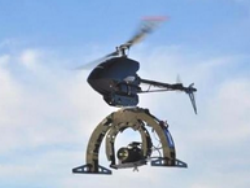
Market Reports Online Market Reports Online Unmanned aerial vehicles (UAVs), colloquially known as drones, have attracted criticism given their role in military operations. However, there is a burgeoning market for commercial applications, with the US government asking the Federal Aviation Authority (FAA) to draft plans for civilian airspace integration by 2015, as required by the Modernization and Reform Act of 2012.
Features and benefits
Analysis of the military evolution of UAVs, and how their deployment could both represent an economic boon and constraint.
Consideration of how UAVs could be applied in commercial functions such as agriculture and the benefits of their integration.
Evaluation of the current stage of UAV technology and whether they are currently capable of revolutionizing their fields. Complete report available
Highlights
Although the technology has attracted attention in recent years since the US military deployed drones in precision strikes, the technology is far from in its infancy.
As of 2014, more than 70 countries have acquired UAVs for both commercial and military purposes, and over 50 are seeking to manufacture them.
UAVs have been utilized for agricultural purposes in Japan since the 1990s.
Although there is limited regulation currently in place, drones could spread globally to emulate their role in agriculture. They could also be useful in public safety and security.
Elsewhere, larger tech companies are seeking to harness the power of the technology.
While UAVs are readily available based on current technologies, they still lack crucial developments which would allow them to fly effectively independently. Regulation is also crucial to ensure effectiveness. Finally, governments are concerned about the political issues raised; privacy and potential for conversion to armaments.
Your key questions answered:
What are drones?
How has the use of UAVs benefited the US Armed Forces?
How can UAVs be used in the commercial sector?
What are the pitfalls of UAV integration?

